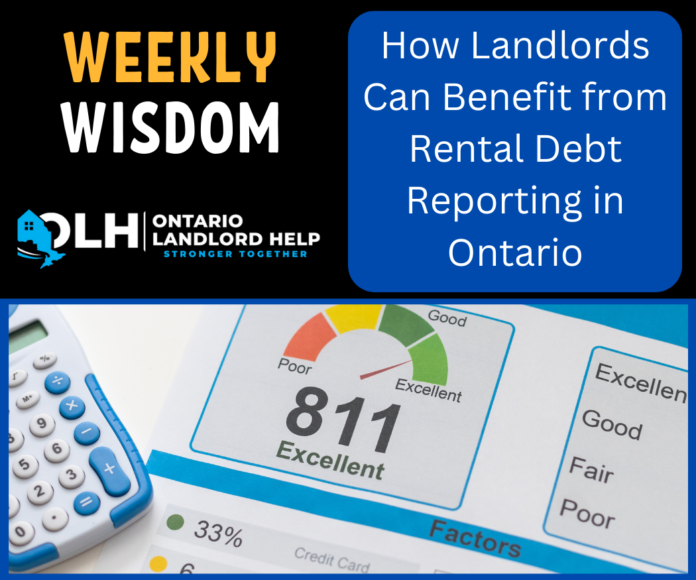In Ontario’s competitive rental market, managing rental income efficiently and minimizing risk is crucial for landlords. One effective tool that can significantly enhance a landlord’s financial stability and tenant management is rental debt reporting. By incorporating rental debt reporting into their property management practices, landlords can enjoy several benefits, ranging from improved tenant accountability to enhanced financial protection. Here’s how rental debt reporting can benefit landlords in Ontario and why it should be a key component of your property management strategy.
1. Enhance Tenant Accountability
Rental debt reporting involves submitting tenant payment information to credit bureaus, which then reflects in the tenant’s credit report. When tenants know that their payment history, including late payments, is reported to credit agencies, they are more likely to pay their rent on time. This added layer of accountability can reduce late payments and improve overall rent collection.
Example: If a tenant is aware that late payments will impact their credit score, they are likely to prioritize paying rent on time, thereby reducing instances of missed or delayed payments.
2. Improve Tenant Selection Process
By utilizing rental debt reporting, landlords can gain deeper insights into a prospective tenant’s payment history and financial behavior. This information helps landlords make informed decisions during the tenant screening process, increasing the chances of selecting reliable tenants who have a proven track record of timely payments.
Example: Reviewing a prospective tenant’s credit report can reveal previous rental payment patterns, allowing landlords to assess the risk associated with a new tenant and avoid potential issues down the line.
3. Facilitate Better Rent Collection
Rental debt reporting can streamline rent collection processes. By monitoring and reporting overdue payments, landlords can identify problematic tenants early and address issues before they escalate. This proactive approach helps in maintaining a steady cash flow and minimizing disruptions in rental income.
Example: If a tenant falls behind on rent, the landlord can take timely actions based on the reported information, such as issuing reminders or initiating legal proceedings if necessary.
4. Strengthen Lease Agreements
Incorporating rental debt reporting into lease agreements adds a layer of professionalism and seriousness to the rental arrangement. Tenants who are informed about the potential impact on their credit score are more likely to adhere to the terms of the lease, including timely payment of rent.
Example: A well-drafted lease agreement that mentions rental debt reporting as a term can serve as a deterrent against late payments, as tenants will be aware of the consequences of non-compliance.
5. Enhance Financial Protection
Reporting rental debt helps landlords protect their financial interests by documenting payment histories and any outstanding balances. This documentation can be invaluable in legal disputes or debt recovery processes, providing clear evidence of a tenant’s payment history.
Example: In case of a legal dispute regarding unpaid rent, having documented evidence of rental debt reporting can support the landlord’s case in court or during eviction proceedings.
6. Build a Positive Rental Reputation
Landlords who utilize rental debt reporting demonstrate a commitment to maintaining high standards in property management. This proactive approach not only helps in managing tenant payments but also enhances the landlord’s reputation in the rental market.
Example: Positive feedback from tenants who appreciate the structured approach to rent collection and payment reporting can attract more quality tenants and contribute to a positive rental experience.
How to Implement Rental Debt Reporting
- Partner with a Property Management Company: Many property management firms, such as OLH Group Property Management, offer rental debt reporting services as part of their comprehensive property management solutions.
- Choose the Right Reporting Service: Ensure that the rental debt reporting service you use is reliable and complies with the regulations set by credit bureaus and Ontario’s rental laws.
- Integrate with Existing Systems: Seamlessly integrate rental debt reporting into your existing property management and rent collection systems for smooth operation and reporting.
- Inform Tenants: Clearly communicate the rental debt reporting policy to tenants and include it in the lease agreement to ensure they are aware of the implications.
For more information on how rental debt reporting can benefit you, or to explore comprehensive property management solutions, visit Property Management – Ontario Landlord Help (olhgroup.ca)


